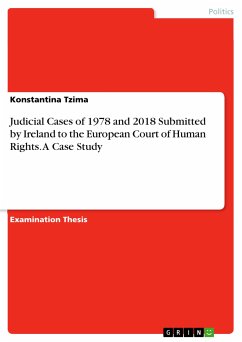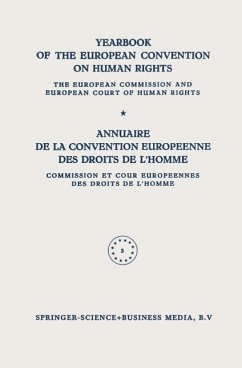
European Convention on Human Rights in the Context of the European Union Law (eBook, PDF)
Sofort per Download lieferbar
Statt: 15,95 €**
13,99 €
inkl. MwSt. und vom Verlag festgesetzt.
**Preis der gedruckten Ausgabe (Broschiertes Buch)
Alle Infos zum eBook verschenkenWeitere Ausgaben:

PAYBACK Punkte
0 °P sammeln!
Seminar paper from the year 2003 in the subject Politics - Topic: Public International Law and Human Rights, grade: 8/10, University of Sarajevo (Centre for Interdisciplinary Postgraduate Studies), course: European Studies, language: English, abstract: The paper offers a review of a parallel development of two distinct but increasingly overlapping systems of the protection of human rights, the one under the auspices of the Council of Europe and its European Convention on Human Rights and the other integrated within the Community Law of the European Communities and later the European Union. The...
Seminar paper from the year 2003 in the subject Politics - Topic: Public International Law and Human Rights, grade: 8/10, University of Sarajevo (Centre for Interdisciplinary Postgraduate Studies), course: European Studies, language: English, abstract: The paper offers a review of a parallel development of two distinct but increasingly overlapping systems of the protection of human rights, the one under the auspices of the Council of Europe and its European Convention on Human Rights and the other integrated within the Community Law of the European Communities and later the European Union. The former established the individual citizen as the subject of international law, who may seek protection for alleged violations of his/her rights directly from the European Court of Human Rights in Strasbourg. This system operates relatively efficiently since it is based on the largely universally accepted political principles of democracy and human rights by all member states of the Council of Europe. In contrast, the Community Law system is concerned more with economic and social rights of the European Union citizens. Given a specific supra-national legal system of the European Union some of its norms may collide with the European Convention on Human Rights as well as with national constitutions of EU member states. Under the doctrine of "surrendered sovereignty" the European Court of Justice is authorized to issue direct orders to national courts when applying the Community Law. This is not the case with the European Court of Human Rights, which can act only on an individual case-to-case basis without giving preliminary judgements on national laws in general. Moreover, the two courts gave different interpretations of certain provisions of the European Convention on Human Rights in the past and issued contradictory judgements. To avoid such problems, some have proposed an idea that, despite the fact that all EU member states have signed the European Convention on Human Rights, the European Union as an entity should do the same in order to ensure uniformity of legal interpretations and judicial practice, which again raises questions on the legal nature of the European Union.
Dieser Download kann aus rechtlichen Gründen nur mit Rechnungsadresse in A, B, BG, CY, CZ, D, DK, EW, E, FIN, F, GR, HR, H, IRL, I, LT, L, LR, M, NL, PL, P, R, S, SLO, SK ausgeliefert werden.













